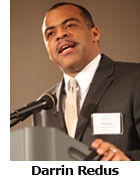 If you want what may be the simplest innovation process, here it is: Find the things that others are not doing well, or just not doing. Once you identify these deficiencies, design a better service or product based on what customers really want. Then sell it.
If you want what may be the simplest innovation process, here it is: Find the things that others are not doing well, or just not doing. Once you identify these deficiencies, design a better service or product based on what customers really want. Then sell it.
For example, there was an article in Forbes magazine recently on a Japanese company called Kumon that teaches kids around the world how to read and write and do basic math. They have over a thousand centers in the United States alone, with 194,000 students. They do almost no advertising, yet keep growing rapidly.
Now, you might wonder why with universal public education in the U.S. a Japanese company can do so well teaching the basics. The answer is simple enough: The public schools don’t do it very well in many places. Blame it on modern educational theories, “feel good” grading, distracted children or whatever, but the public system doesn’t do as good a job as parents would like. Many of them are willing to pay the relatively small amount it takes to get their kids educated properly (Kumon charges less than 0 per two-month course).
innovation DAILY
Here we highlight selected innovation related articles from around the world on a daily basis. These articles related to innovation and funding for innovative companies, and best practices for innovation based economic development.
Guest Post: Josh Kopelman advises DreamIt companies to fail early and often
 Tuesday night’s DreamIt
2010 Speaker Series event at the University City Science Center
featured an engaging, Powerpoint-free conversation with
Josh Kopelman of First Round
Capital.
Tuesday night’s DreamIt
2010 Speaker Series event at the University City Science Center
featured an engaging, Powerpoint-free conversation with
Josh Kopelman of First Round
Capital.
The 90-minute discussion revolved around gathering feedback, making adjustments, and approaching startup challenges deliberately. Kopelman set the tone early: “One thing I know about all of your business plans, is they’re all wrong.”
By way of example, Kopelman pointed to Invite Media – another Philly startup success story, acquired by Google on June 3rd – who started as an algorithms company and through decisive, timely “pivots” evolved into an ad-buying dashboard. As an entrepreneur, he asked, do you pivot and adjust, or do you aim and stay steadfast on target?
Innovation at the U.S. Patent Office: Director Kappos' Three-Track Examination Proposal
 For more than a decade, the U.S. Patent and Trademark Office has been
criticized for long delays in the processing of patent applications and
for issues around patent quality. Both can have negative impacts on
innovation, as the USPTO recognized in a recent White
Paper.
For more than a decade, the U.S. Patent and Trademark Office has been
criticized for long delays in the processing of patent applications and
for issues around patent quality. Both can have negative impacts on
innovation, as the USPTO recognized in a recent White
Paper.
To address these problems, USPTO has done some innovating of its own. Director David Kappos announced a proposal earlier this month that grapples with the backlog issue and offers an opportunity for applicants to work with the Office to assign priority to pending applications. The “Three-Track” proposal would enable applicants, when they file, to request expedited review under Track I or delayed examination under Track III. Applicants that do not request either option would have their applications processed under current procedures (Track II). We applaud the creative thinking and leadership behind the Three Track initiative. If carefully implemented, it will have real benefits for innovators of all sizes, from companies like Microsoft to small and medium-sized enterprises, as well as individual inventors and universities.
How to Rewrite Your Job Instead of Retiring
 Not to bring up a sensitive subject, but are you getting older, but not wanting to retire? Are you getting tired of the day-to-day details of the business you started, own, and love, but not wanting to leave it? I found a way to have my alleged cake and eat it too – a solution to both these dilemmas.
Not to bring up a sensitive subject, but are you getting older, but not wanting to retire? Are you getting tired of the day-to-day details of the business you started, own, and love, but not wanting to leave it? I found a way to have my alleged cake and eat it too – a solution to both these dilemmas.
WSJ ClipIt’s been three years now since the Wall Street Journal published that story in the picture here, about our change at my company. I was tired of running the day-to-day aspects of the business. Management is all those meetings. As the company grows – we had more than 40 employees and multi-million-dollar sales – the founder’s job changes. I didn’t particularly like managing, but that was my job, so I tried to do my best.
I had a team ready. I can’t claim this was great planning, but it was true. It just happened. We’d talked generally about me retiring, sometime in the distant future. But by the time I made the move, they were ready. Bright younger people, and one of them in particular, dedicated, experienced in Silicon Valley, UK entrepreneurship, the industry as well as our company, Princeton degree, and, yes, also my daughter.
10 Tips In Preparing For Investors
 Darrin RedusThe challenges of raising investment capital for your business and how to best prepare for an investor have been well documented by many industry experts. Yet having witnessed scores of presentations over the years I find that many entrepreneurs routinely miss a few key areas. And while there are certainly no guarantees or full-proof plans that will automatically result in successfully raising capital, the following suggestions should help you along the journey:
Darrin RedusThe challenges of raising investment capital for your business and how to best prepare for an investor have been well documented by many industry experts. Yet having witnessed scores of presentations over the years I find that many entrepreneurs routinely miss a few key areas. And while there are certainly no guarantees or full-proof plans that will automatically result in successfully raising capital, the following suggestions should help you along the journey:
-
Present your business with energy, enthusiasm and confidence –- if you’re not excited about your business endeavor you’ll have a very difficult time getting an investor excited.
-
Know your business and industry cold – take the time to really understand and segment your chosen market. Know the trends, and consider doing a SWOT analysis on your chosen market (Strengths, Weaknesses, Opportunities and Threats).
-
Know your competition cold –- don’t make the mistake that so many have in assuming that “No one else is doing this”. If your investor discovers a recognized competitor that you should have discovered, you have instantly damaged your credibility.
-
Consider a comparison chart that demonstrates your unique advantages versus key competitors.
The 12 Dysfunctions of an Entrepreneur
 1. Failure to evolve.
1. Failure to evolve.
Markets change over time. People’s needs change over time. One of the biggest problems that I see with entrepreneurs and small businesses is that they start the business based on a single solution, or set of solutions, products or services, that satisfy one particular need or pain point in a market, and they may be doing it very well at that point in time.
But over time, markets evolve, needs evolve, pain points evolve and everything changes. All too often, the people who are providing solutions for those markets don’t continue to evolve with the markets and are left with a bigger and bigger gap between the need and the pain point of the market and the product, service or solution that they’re providing. Add a drastic change in the bigger economy and the speed at which these gaps open grows exponentially, as does the width and depth of the gaps.
Is Start-Up Savvy in Your DNA?
Ross Staszak and Aksel Güngör have just graduated from Drexel University. Both want to start companies, and both are wondering whether to study entrepreneurship in grad school. But perhaps the question they should be asking is this: Do they have the right DNA?
We've always had a hunch that entrepreneurs are a different breed, but some academics are taking that idea quite literally. Turns out, part of being an entrepreneur may be innate, and researchers are getting close to identifying genes associated with start-up savvy. According to Case Western Reserve University economics professor Scott Shane, author of Born Entrepreneurs, Born Leaders, 40 percent of the variation in the tendency to be an entrepreneur is inherited. His work puts a new spin on an age-old question: Can classroom learning really teach you how to succeed?
ASME and Clemson University Launch 1st AutoVenture Forum
 A consortium of automotive officials, the Office of Breakthrough Innovation of the American Society of Mechanical Engineers (ASME) and Clemson University’s International Center for Automotive Research are set to make it easier for automotive manufacturers and suppliers to tap into the leading entrepreneurs in vehicle microelectronics.
A consortium of automotive officials, the Office of Breakthrough Innovation of the American Society of Mechanical Engineers (ASME) and Clemson University’s International Center for Automotive Research are set to make it easier for automotive manufacturers and suppliers to tap into the leading entrepreneurs in vehicle microelectronics. The inaugural AutoVenture Forum, set for September 22, 2010 in Novi, MI will directly match selected entrepreneurial ventures with business units within large automotive companies through a showcase of business pitch sessions. “It’s an effort aimed to build a profitable automotive sector by facilitating a more agile innovation process,” says Chris Przirembel, Clemson University vice president for Research and Economic Development and chair of the ASME Innovation Committee. “To fully succeed, corporate automotive innovation groups need to draw upon the worldwide entrepreneurial community to tap creative business models and innovative technologies,” he says.
The inaugural AutoVenture Forum, set for September 22, 2010 in Novi, MI will directly match selected entrepreneurial ventures with business units within large automotive companies through a showcase of business pitch sessions. “It’s an effort aimed to build a profitable automotive sector by facilitating a more agile innovation process,” says Chris Przirembel, Clemson University vice president for Research and Economic Development and chair of the ASME Innovation Committee. “To fully succeed, corporate automotive innovation groups need to draw upon the worldwide entrepreneurial community to tap creative business models and innovative technologies,” he says.
Thinking Bigger Media president will lead national women’s business organization.
 Kelly Scanlon, president of Thinking Bigger Business Media, has been elected chair of the National Board of Directors for the National Association of Women Business Owners (NAWBO). Scanlon was installed for a one-year term on June 9 at NAWBO’s 2010 Women’s Business Conference in Washington, D.C. The organization celebrated its 35th anniversary at the conference, which attracted hundreds of U.S. and global women entrepreneurs.
Kelly Scanlon, president of Thinking Bigger Business Media, has been elected chair of the National Board of Directors for the National Association of Women Business Owners (NAWBO). Scanlon was installed for a one-year term on June 9 at NAWBO’s 2010 Women’s Business Conference in Washington, D.C. The organization celebrated its 35th anniversary at the conference, which attracted hundreds of U.S. and global women entrepreneurs.
The installing officer for the 13-member board was Virginia Littlejohn, a past NAWBO national president who was a driving force behind the lobbying that led to the passage of the Women’s Business Ownership Act of 1988 (HR 5050), which allowed women to gain access to capital in their own name.
NAWBO is the largest membership organization exclusively for women business owners in the country. With 80 chapters nationwide and members in 60 countries on five continents, NAWBO serves women business owners through education, strategic alliances and public policy.
FROM ONE PUBLISHER TO ANOTHER..............CONGRATS TO KELLY SCANLON , A GREAT ENTREPRENEUR AND VISIONARY LEADER AND GOOD FRIEND.......RICH BENDIS, INNOVATION AMERICA
Entrepreneurs in the Midwest to Profit from Commerce Department Investment to Expand JumpStart, Inc.

Grant promotes innovation and small business development in OH, MI, IN and MN areas affected by automotive downturn
Everything Your Startup Does And Does Not Need
 If you visit a startup using Microsoft products, talking on their own phone system, sitting in an office with central air conditioning, you're visiting a startup that's doing something wrong.
If you visit a startup using Microsoft products, talking on their own phone system, sitting in an office with central air conditioning, you're visiting a startup that's doing something wrong.
How to Win the Hearts of Investors
 To me investing in early stage entrepreneurs is kind of like dating with the hopes of finding the girl you are going to marry. Like a marriage, there is no turning back once you put money into a deal and while it can be very rewarding, it also requires a long-term commitment of working with the person you invest in.
To me investing in early stage entrepreneurs is kind of like dating with the hopes of finding the girl you are going to marry. Like a marriage, there is no turning back once you put money into a deal and while it can be very rewarding, it also requires a long-term commitment of working with the person you invest in.
Like my dating philosophy (when I was younger of course) my goal is to 1) Take a quick look at as many options as manageable 2) Spend time with the options that catch my eye 3) Marry the investment that win my heart.
Going with the Waves
 The Wave Glider from Liquid Robotics was created as a way to conduct persistent, long-term research on marine life in the open water. But it could come in handy for the oil spill in the Gulf of Mexico, too.
The Wave Glider from Liquid Robotics was created as a way to conduct persistent, long-term research on marine life in the open water. But it could come in handy for the oil spill in the Gulf of Mexico, too.
Invented by company founders Joe Rizzi and Roger Hines, the device was originally invented as a vehicle that would let researchers eavesdrop on whales, but they soon turned to scientific, military and commercial applications.
Swinging at the Innovation Piñata: The Need for Outside Eyes
 Finding a hit in innovation is a lot like swinging at a piñata blindfolded. You know a treasure is there, but success is a matter of random luck because you don’t where where and when to strike. Add a pair of outside eyes, though, and your ability to reap rewards greatly increases. Outside eyes, freed from corporate and cultural blindfolds, are sometimes the key. That was one lesson I learned at the PaperCon 2010 conference when I listened to Steve Wilhelms of Appleton Papers talk about their successful microencapsulation technology that is now being used in many open innovation projects with companies like Procter and Gamble.
Finding a hit in innovation is a lot like swinging at a piñata blindfolded. You know a treasure is there, but success is a matter of random luck because you don’t where where and when to strike. Add a pair of outside eyes, though, and your ability to reap rewards greatly increases. Outside eyes, freed from corporate and cultural blindfolds, are sometimes the key. That was one lesson I learned at the PaperCon 2010 conference when I listened to Steve Wilhelms of Appleton Papers talk about their successful microencapsulation technology that is now being used in many open innovation projects with companies like Procter and Gamble.
Monica Lewinsky: Unpaid Intern
 Since YouTern launched last month, the debate over paid
vs. unpaid internships has received national attention.
Since YouTern launched last month, the debate over paid
vs. unpaid internships has received national attention.
We’ve heard from nearly everyone – start-up executives, employer associations, career center professionals, students, parents and media. We’ve even received anonymous emails from people upset because we don’t insist that every post on YouTern be a paid position (perhaps they didn’t read our ‘Intern Law 101’ post).
Despite the passion, federal “laws” are the problem.
We have laws – universally ignored – that govern speed limits. Laws exist to keep people from smoking near the entrance of office buildings; everyone knows how well that works.
Doing More Business in the World's Poorest Places
 Marty Anderson, a business lecturer at Babson College, devoted the
first part of his career to corporate turnarounds and supply chain
management. In the course of his worldwide travels, he's begun
documenting what he calls "innovation at the edge of electricity." He
spoke recently to Smart Answers
columnist Karen E. Klein about the use of technology by entrepreneurs
in some of the world's poorest places. Edited excerpts of their
interview follow.
Marty Anderson, a business lecturer at Babson College, devoted the
first part of his career to corporate turnarounds and supply chain
management. In the course of his worldwide travels, he's begun
documenting what he calls "innovation at the edge of electricity." He
spoke recently to Smart Answers
columnist Karen E. Klein about the use of technology by entrepreneurs
in some of the world's poorest places. Edited excerpts of their
interview follow.
Karen E. Klein: How did you begin studying entrepreneurship on the fringes of the developed world?
Marty Anderson: I've been living at the edge of the First and Third Worlds for most of my life, in the course of my previous work. And I noticed the Anglo view of the Third World was completely erroneous. If you wanted to do the most advanced Toyota (TM) techniques, for example, it was much easier to roll out in places such as Brazil, where they don't already have resources and technologies and think they know it all.
The world’s richest self-made women
 In 1998 Meg Whitman took a leap of faith and accepted a job as chief
executive of eBay,
then a small tech firm with 30 employees. The payoff was equity in the
burgeoning company
In 1998 Meg Whitman took a leap of faith and accepted a job as chief
executive of eBay,
then a small tech firm with 30 employees. The payoff was equity in the
burgeoning company
Thanks to that decision, Whitman soon joined the ranks of the 1,011 billionaires in the world. Rarer still, she’s one of just 14 female billionaires in the world right now who earned their fortunes, rather than inherited them. The richest of them is China’s Wu Yajun, worth $3.9 billion and ranked 232nd in the world in March when we published our 2010 Billionaires list. By contrast, 665 men are self-made billionaires including the three richest people in the world, Carlos Slim Helú , Bill Gates and Warren Buffett.
All of these self-made female billionaires have impressive personal stories, but the dearth of them is itself a story, and begs the question of why so few?
7 Great Tips To Boost Your Creativity
 Creativity
is the most important tool for every designer; technology can’t replace
it and as a personal opinion it won’t replace it until the end of days.
I saw a lot of great works done in earlier version of Photoshop
which still impress the users of the latest version of this program
(CS5,unfortunately I am not a user of this “wow” version).
Creativity
is the most important tool for every designer; technology can’t replace
it and as a personal opinion it won’t replace it until the end of days.
I saw a lot of great works done in earlier version of Photoshop
which still impress the users of the latest version of this program
(CS5,unfortunately I am not a user of this “wow” version).
Here I present a list of some tips to increase your creativity; these work for me and I noticed from various forums and blogs of the world-wide designers that these tips also work for them.
Please write your impressions in a comment so that I discover what the best tips are, and maybe I will republish this article as being better informed than now.
China: Our Internet is Free Enough
 China, with the most Internet users of any country in the world, has
issued its first government whitepaper declaring an overall Internet strategy--one that advocates
Internet growth while implicitly defending censorship policies amid
global concern over online repression and China-based cyber espionage.
China, with the most Internet users of any country in the world, has
issued its first government whitepaper declaring an overall Internet strategy--one that advocates
Internet growth while implicitly defending censorship policies amid
global concern over online repression and China-based cyber espionage.
"I think this whitepaper is a statement that the Chinese Communist Party intends to stay in power, and also intends to expand Internet access, and be on the cutting edge of Internet innovation, and that there isn't any contradiction in any of those things," says Rebecca MacKinnon, a China Internet expert who is a visiting fellow at Princeton University's Center for Information Technology Policy.
The 3 Types Of Startup Cultures
 Culture has to be one of the most popular topics, yet analytically hard to quantify.
Culture has to be one of the most popular topics, yet analytically hard to quantify.
It thus gets relegated to the “soft stuff” because there is little evidence-based research supporting how to create a viable culture, what a good culture is, etc.
And perhaps a high-performance culture is a little like the quote about how to know if something is pornographic. It is self-evident to the observer and participant.

